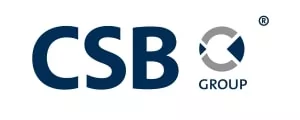- within Corporate/Commercial Law, Immigration and Accounting and Audit topic(s)
- in North America
The evolution and growth of businesses across a myriad of industries in the 21st century can be said to bring about a number of different action points which need to be addressed, to ensure that such evolution, growth and expansion adds value to business owners.
On the other hand, it must be ensured that this does not spiral out of control to the extent that corporate, legal, regulatory, finance and fiscal matters are bypassed by way of lack of consideration. This is of course, no less prominent in instances when different businesses partake in arrangements whereby a portion or all of the business is disposed of in favour of another business.
VIEW ALL OUR CORPORATE SERVICES
Types of Mergers and Acquisitions Transactions
The use of legal persons for commercial purposes within the context of Maltese law presents controlling bodies within such persons with a number of different options through which such business may expand within the context of other business takeover. By way of highlight, such transactions may take place through:
- An amalgamation of companies;
- An acquisition of equity or other controlling interests, through transfer or new issuance; or
- The transfer of going concern business.
Amalgamation of Companies
Types of amalgamation
Within the context of the Companies Act (Chapter 386 of the laws of Malta), it is possible for companies to amalgamate with one another, which results in the amalgamation of companies' balance sheets and business to result in the emergence of one sole legal person. Such process is ideal for different business ventures which would be seeking to combine their different resources and assets in order to provide a consolidated service/product through one legal person. The Companies Act provides for three mechanisms through which companies may be amalgamated:
- Mergers by acquisition;
Within such merger process, the acquiring company acquires all the assets and liabilities of the target company/ies, and this, in exchange for the issue to the shareholders of the target company/ies of shares in the acquiring company and a cash payment, if any, not exceeding 10% in the nominal value of the shares issues.
- Mergers by formation of a new company;
Within such a process, two or more companies' assets and liabilities are amalgamated within the forum of a new company, with the shareholders of the amalgamated companies being issued shares in the newly formed and incorporated company.
- Acquisition of one company by another which holds 90% of more of its shares.
Such process allows for a simplified process when compared to mergers by acquisition and mergers by formation of a new company, in that, for example specific aspects of the draft terms of merger, a director's report on the draft terms of merger, an experts report to shareholders need not be catered for.
GET EXPERT ADVICE
Process of amalgamation
With respect to amalgamation by acquisition or by the formation of a new company, the directors of the acquiring company and each of the companies being acquired, and in the case of a merger by formation of new company, of each company being merged, are obliged to draw up the Draft Terms of Merger in writing which shall specify, inter alia, the status, name and registered office of the amalgamating companies, and the terms relating to the allotment of shares in the acquiring company.
The completed draft terms of the merger are to be signed by at least one director and the company secretary of each of the amalgamating companies and subsequently forwarded to the Registrar who will register them provided that all the requirements are satisfied.
Moreover, a such merger must be approved by means of an extraordinary resolution of each of the amalgamating companies which resolution must be reached at least one month after and not later than three months from the publication of the Draft Terms of Merger. In the case of a merger by formation of a new company, the memorandum and articles of the new company shall be approved by an extraordinary resolution of each of the merging companies.
The directors of each of the amalgamating companies are entrusted with the drawing up of a detailed written report explaining the Draft Terms of Merger and setting out the legal and economic grounds for them. The directors must also inform the general meeting of their company and the directors of the other amalgamating companies so that they may inform their respective general meetings, of any material change in the assets and liabilities between the date of preparation of the draft terms of the Merger and the date of the general meetings which are to decide on the Draft Terms of Merger.
Having said that, the obligation to draw up a report and to provide information as aforementioned, will not be required if all the shareholders and holders of other securities conferring the right to vote of each amalgamating company have so agreed.
A written report to the shareholders is to be drawn up by one or more experts (which shall be approved by the Registrar) acting on behalf of each of the amalgamating companies. The report shall specify whether the share exchange ratio is fair and reasonable and to this effect it shall:
- indicate the method or methods used to arrive at the share exchange ratio proposed; and
- state, whether such method or methods are adequate in the case in question, indicating the values, arrived at using each such method and giving an opinion on the relative importance attributed to such method or methods in arriving at the value decided on.
The report shall describe any special valuation difficulties which have arisen, and each expert shall be entitled to obtain from the amalgamating companies all relevant information and documents and to carry out all necessary investigations.
One or more independent experts may be appointed to draw up a joint report for all the amalgamating companies by the Registrar at the joint request of the companies involved. Once again, the above shall not apply if all the shareholders of all the companies involved in the amalgamation have so agreed.
The shareholders of the amalgamating companies are entitled to inspect the following documents at the registered office of each company at least one month before the date fixed for the general meeting which is to decide on the Draft Terms of Merger:
- the Draft Terms of Merger;
- the annual accounts and the directors' reports of the amalgamating companies for the preceding three accounting periods;
- where required, an accounting statement drawn up as at a date which shall not be earlier than the first day of the third month preceding the date of the draft terms of the merger, if the latest annual accounts relate to an accounting period which ended more than six months before that date;
- where required, the reports of the directors of the amalgamating companies relating to the amalgamation;
- where required, the reports of the experts relating to the amalgamation; and
- for the purposes of paragraph (c), an accounting statement shall not be required if the company publishes a half-yearly financial report in accordance with listing rules issued in terms of the Financial Markets Act and governing such reports, and makes it available to shareholders in accordance with this sub-article. Furthermore, an accounting statement shall not be required if all the shareholders and all holders of other securities conferring the right to vote of each of the companies involved in the Merger have so agreed.
Notwithstanding the above, interim depreciation and provisions as well as material changes in actual values not shown in the accounting records shall be taken into account.
Furthermore, the shareholders are entitled to obtain, on request and free of charge, full or partial copies (which may be provided in electronic form) of the documents mentioned above. A company will not be required to make the documents referred to above available at its registered office if it makes such available on its website for a continuous period beginning at least one month before the day fixed for the general meeting which is to decide on the Draft Terms of Merger and ending not earlier than the conclusion of that meeting.
The amalgamation of two or more companies will not take effect until three months from the date of the last publication of the statement published in the Gazette or on a website maintained by the Registrar. During this period, any creditor of any of the amalgamating companies whose debt existed prior to the publication of the Draft Terms of Merger may, by sworn application, object to the amalgamation giving reasons as to why the amalgamation not take effect.
SPEAK TO A PROFESSIONAL
An acquisition of equity or other controlling interests
It so often is the case that within different industries, promoters of specific ventures seek to (a) cash in on their investment and growth within the business through a disposition of assets representing their vested interests within such a business to a third party, who may or may not be another business operating in the same industry or (b) seek to enhance the business' capital by seeking additional investment in the business, against which shares or other instruments are issued in favour of the new investor.
Whereas in the case of the former, most transactions are typically conducted through the transfer of shares within the company in question, within the latter, companies may seek to issue equity, notes (which may also be convertible into equity) or other instruments representing vested interest in favour of incoming investors which represent the rights of such investors. In this regard, share purchase agreements and note subscription agreements are examples of legal instruments made use of to formalise such relationship at a contractual level.
It so often is the case that assets of the company, such as shares, may also be collateralised, in the form of, for example, a pledge via a pledge agreement, to guarantee outstanding obligations of the debtor-party to the agreement.
The transfer of going concern businesses
Within the context of the acquisition of a business it may so be the case that the going concern aspect of the business (such as receivables, stock and other capital assets) are transferred to the acquirer without any dispositions being made at a corporate level. Such process typically involves the novation and assignment of all relevant contractual relationship which the corporate entity disposing of the business would have entered into and this, in favour of the acquiring business.
Key Considerations in a M&A process
A M&A process is largely tailor made depending on the industries in which the companies in question operate in, the complexity of the transaction and the history of the companies being acquired. In terms of best practice, promoters of such transactions are advised to, by way of non-exhaustive highlight, consider:
The good standing of the company being taken over from a corporate, financial, fiscal, regulatory and legal point of view
In this regard, promoters are encouraged to look into the current affairs of the company/ies being acquired and to enquire on the historical performance, filings and dealings of the company with respect to any corporate changes which may have taken place, financial standing and significant events which may have had a material impact on same, fiscal coherence and proper filings/payments being made, ensuring that the regulatory standing of the company is in good order and, from a legal perspective, ensure that any contractual relationships being carried over post acquisition are not prejudicial to the acquirer's intentions, targets and risk appetite.
The financial viability of the purchase.
Promoters are encouraged to ensure that costings and projections are carried out to ascertain that the business being acquired, when juxtaposed against the intentions of the acquirer, projects a positive performance in the foreseeable future.
For same industry market participants, concentration and competition law issues.
In the event that the acquiring company and the target company/ies operate within the same industry, consideration must be had to the Control of Concentration Regulations (SL.379.08 of the laws of Malta), so as to consider whether any notification to the applicable authority would need to be made and within such light, to consider specific structuring aspects of the acquisition.
Intellectual property protection, transfer and preservation.
The correct and relevant registration and preservation of intellectual property rights is a key consideration so as to ensure that such rights, which in industries such as the fintech and remote gambling industries are crucial in the context of value preservation of the product and service suffered, are not compromised or in any way limited such that the compensation paid in relation to the acquisition being made is prejudiced in any way.
Overall regulatory concerns and processes.
Within the context of regulated companies, acquisitions often bring about notification and/or prior approval requirements depending on the extent to which application regulation is applied for different aspects of the transaction. By way of example, within the context of a change in ownership of a regulated entity, regulators would need to often pre-approve such new owners. Likewise, in the event that the acquirers are seeking to amend aspects of the business model of the target company/ies, regulatory consideration must be had with respect to the potential need of a prior approval by the competent authority.
Legal certainty through well drafted contracts.
The engagement of legal counsel to ensure that the rights of the acquirer or the target company are not prejudiced through the development and execution of a well negotiated and drafted set of contracts is a crucial consideration in M&A transactions. Independent counsel which is not linked to the counterparty is strongly suggested to ensure objectivity and lack of conflict of interest.
How can CSB Group assist with Mergers and Acquisitions?
CSB Group's diverse team of professionals has assisted a number of international customers with M&A transactions including 888 Holdings, EBET and MaximBet and is well equipped to assist both acquirers and target companies with numerous aspects prior to the acquisition transaction taking place and after the transaction takes place.
|
Sector |
Pre-Transaction |
Post Transaction |
|
Corporate |
Assistance set up corporate vehicles; Assistance with share transfers; Assistance with share increases and allotments; Amendments to constitutive documents; |
Company administration. Registered office. Assistance with ad hoc corporate transactions and Malta Business Registry submissions. |
|
Legal & Regulatory |
Drafting and review of contractual instruments surrounding the transaction. Legal due diligence on the standing of all operational and regulatory aspects of the target company's business. Legal representation during negotiations. Advice and guidance on all regulatory and legal aspects of the transaction. Registration of and assistance with the preservation of intellectual property rights. Assistance with any licensing, prior approval or notification process required. Tax advice with respect to structuring for tax optimisation. |
Compliance and legal support. Provision of ad hoc contract drafting and review services, as the case may be. |
|
Financial |
Financial modelling, projections, and cost-workings. Financial and fiscal due diligence of the target company's affairs. |
Fiscal compliance and advisory from a direct and indirect tax perspective; Bookkeeping. Payroll. Audit co-ordination. |
The content of this article is intended to provide a general guide to the subject matter. Specialist advice should be sought about your specific circumstances.
[View Source]


